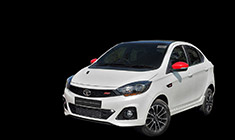News
Hyundai unveils next generation hybrid powertrain
The 2.5-litre hybrid system is seen in the new Palisade SUV and makes 329 BHP and 460 Nm of torque.
Hyundai has unveiled its next-gen hybrid powertrain system, which is set to deliver new standards in power and efficiency. The system was unveiled at the company’s ‘Next-Gen Hybrid System Tech Day’.
The new system comprises a new transmission with two integrated motors that can be paired flexibly with a range of internal combustion engines. This allows optimized performance and fuel efficiency across a range of vehicle segments. Additionally, various electrification-focused tech has been incorporated into the next-generation hybrid system to enhance driving performance, refinement and ride comfort.
The first powertrain to use the new hybrid system uses a newly developed 2.5-litre turbo hybrid unit, which enhances the design and control technology of the existing 2.5-litre petrol engine to maximize efficiency. A next-gen 1.6-litre turbo hybrid unit will also be available.
The starting and generation tasks have also been transferred to the transmission, minimizing power losses. The newly developed transmission includes a new P1 motor that handles starting, battery energy generation and energy deployment to assist propulsion. The transmission’s P2 driving motor is responsible for propulsion and regenerative braking. This integrated dual-motor setup improves power, performance, and fuel efficiency while achieving smooth shifting and reducing noise and vibrations.
The 2.5-litre hybrid system is seen in the new Palisade SUV and makes 329 BHP and 460 Nm of torque. That’s 19% more power and 9% more torque than the regular 2.5-litre turbo. More importantly, the hybrid offers a roughly 45% improvement in fuel efficiency.
The next-gen 1.6 turbo hybrid improves fuel efficiency by four percent in a mid-size SUV compared to previous models. The system’s torque is also increased from 367 Nm to 380 Nm, resulting in better throttle response.

Hyundai also showcased a lineup of electrification-focused technologies, comprising Electric All-Wheel Drive (e-AWD), Electrification-Vehicle Motion Control (e-VMC 2.0), e-Handling 2.0, Electrification- Evasive Handling Assist (e-EHA 2.0), e-Ride 2.0, Stay Mode, V2L and Smart Regenerative Braking.
The e-AWD system adds a motor to the rear axle, enhancing driving performance and acceleration response. Hyundai plans to offer both e-AWD and conventional mechanical AWD in its models according to vehicle class and regional market requirements.
In a first for hybrid vehicles, Stay mode utilizes the battery of the car to run all in-vehicle convenience features, including air-conditioning and multimedia without starting the engine. It can be used for up to one hour when the battery’s state of charge is between 70 and 80 percent. This system also includes a ‘Stay Mode Usage Reservation’ feature. This function synchronizes with the navigation system and begins charging the high-voltage battery about 2 km before reaching a user’s intended destination, targeting a battery charge level of 70 to 80 percent upon arrival to maximize Stay Mode usage time.
The new hybrid system also gets the V2L function that is seen in EVs. It offers a maximum output of 3.6 kW, allowing users to charge and power external appliances and personal tech devices. V2L can be used continuously while the engine is running, and in Stay Mode without the engine running. In this use case, up to 50 percent battery capacity (from 80 to 30 percent SoC) can be utilized.
Hyundai plans to introduce the new hybrid transmission with various engines across a system output from the low-100 range to the mid-300 horsepower region. Models will be offered across all segments from compact to large and luxury classes.
The hybrid powertrain lineup will increase from three models to five, with the new Palisade sporting the 2.5-litre hybrid system going into mass production this month.
Hyundai also plans to introduce a rear-wheel-drive 2.5 turbo hybrid system in 2026 and expand its new technology to the Genesis brand as well.



















